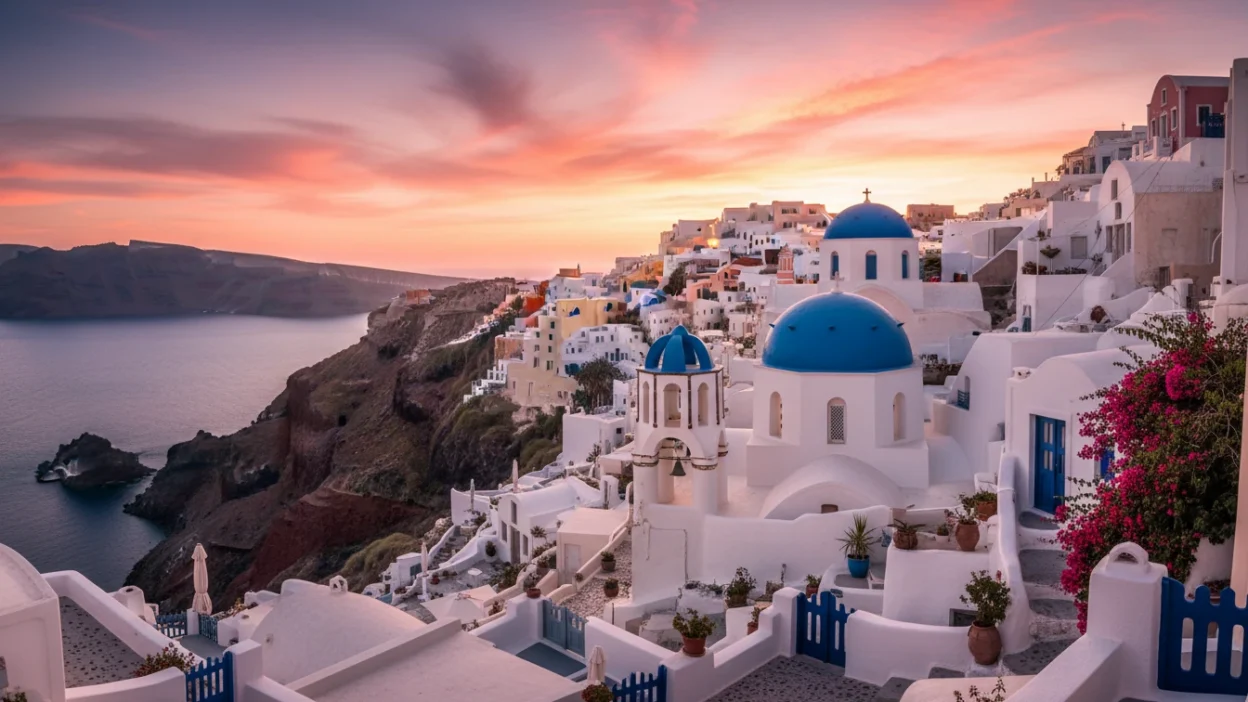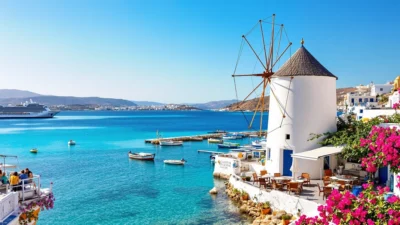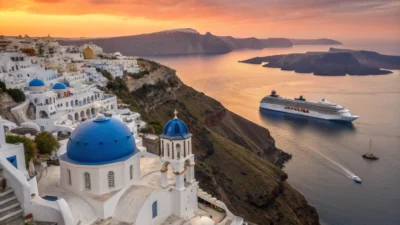Capturing the Greek Islands through your lens is a dream for photographers worldwide. The iconic whitewashed buildings, brilliant blue domes, dramatic caldera views, and crystal-clear waters create an unparalleled backdrop for stunning imagery. However, knowing the best time for Greek island photography can mean the difference between good shots and truly spectacular images that showcase these Mediterranean gems at their finest.
Whether you’re a professional photographer planning a dedicated photo tour, a couple seeking dreamy vacation portraits, or an enthusiastic traveler wanting to capture memories, timing is everything. This comprehensive guide will help you understand seasonal variations, lighting conditions, weather patterns, and the unique photographic opportunities each season offers across the Greek Islands.
Understanding Greek Island Light and Weather
The Greek Islands are blessed with exceptional light quality that has drawn photographers and artists for centuries. According to Greeka’s photography guide, the Mediterranean light here creates perfect conditions for capturing dramatic landscapes and architectural details.
Why Greek Island Light is Special
The unique positioning of the Greek Islands in the southeastern Mediterranean creates lighting conditions that photographers dream about:
- Intense color saturation: The deep blues of the Aegean Sea appear even more vivid
- Natural reflectors: White buildings bounce light beautifully, creating soft, even illumination
- Clear atmosphere: Minimal pollution and humidity result in sharp, crisp images
- Extended golden hours: Longer twilight periods provide more time to capture that perfect shot
Morning light tends to be cooler and bluer, while evening light warms everything with golden and amber tones. The white buildings of Greek islands reflect surrounding colors beautifully, picking up blues from the sky and sea.
Best Seasons for Greek Island Photography
Spring (April – May): The Photographer’s Paradise
Spring ranks as one of the absolute best times for Greek island photography, offering advantages that summer simply cannot match.
Visual Advantages
- Wildflower blooms: Hillsides carpet with vibrant red poppies, purple thyme, and yellow broom
- Lush green landscapes: After winter rains, the normally arid islands burst with vegetation
- Dramatic skies: Spring clouds add depth and interest to compositions
- Perfect architectural contrast: Colorful flowers against white buildings create stunning contrasts
The famous blue domes of Santorini stand out even more with hills covered in colorful wildflowers as background.
Technical Benefits
- Mild temperatures (15-25°C / 59-77°F): Comfortable for extended outdoor shooting
- Longer days: Increasing daylight hours provide more shooting time
- Soft, diffused light: Spring offers excellent lighting conditions without harsh summer glare
- Minimal crowds: Empty streets and unobstructed views of landmarks
Best Spring Photography Opportunities
| Subject | Best Locations | Optimal Time |
|---|---|---|
| Wildflower landscapes | Santorini hillsides, Naxos countryside, Crete valleys | Mid-April to mid-May |
| Village architecture | Oia, Pyrgos, Kardiani | Early morning (7-9 AM) |
| Seascapes | Any coastal area | Golden hour |
| Cultural events | Easter celebrations across all islands | Variable (check calendar) |
Easter Photography: Greek Orthodox Easter (usually in April or early May) presents incredible cultural photography opportunities with candlelit processions, midnight fireworks, and traditional celebrations.
Summer (June – August): Peak Season Challenges and Opportunities
Summer is the most popular time to visit the Greek Islands, but it presents unique challenges and opportunities for photographers.
Advantages
- Guaranteed sunshine: Consistent sunny weather with almost no rain
- Vibrant atmosphere: Bustling tavernas, beach life, and cultural festivals
- Warmest water (24-26°C / 75-79°F): Perfect for underwater and swimming photography
- Longest days: Extended shooting hours from dawn to dusk
- Cultural festivals: Athens and Epidaurus Festival, Navy Week celebrations
Challenges
- Harsh midday light: Strong overhead sun creates unflattering shadows
- Massive crowds: Iconic locations like Oia’s sunset spot become overwhelmed
- Heat haze: Can reduce sharpness in landscape photography
- Limited availability: Popular photo spots require early arrival
Summer Photography Strategy
The best summer shooting schedule is:
- Early morning (6-8 AM): Soft golden light, empty streets, perfect for caldera views
- Mid-morning (8-10 AM): Clear skies great for architectural shots
- Midday (10 AM-4 PM): Shoot narrow alleyways where bright light works well
- Late afternoon (4-7 PM): Warm tones highlight white buildings
- Blue hour (30 mins before sunset): Perfect for those iconic blue dome shots
Pro Tip: Avoid shooting between noon and 2 PM during summer, these are the busiest and brightest times of the day.
Autumn (September – October): The Insider’s Choice
Autumn is increasingly recognized as the best time for serious Greek island photography, offering an ideal combination of conditions.
Why Photographers Love Autumn
- Extended golden hour: Autumn light lasts longer, casting warm colors across marble ruins and island buildings
- Clearer air: After summer haze, sharper views of distant islands
- Warm water: Sea temperatures remain at 23-25°C (73-77°F) through September
- Reduced crowds: Popular locations become accessible again
- Dramatic clouds: More interesting sky compositions
Seasonal Photography Opportunities
- Wine harvest season: Vineyard photography with grape-laden vines
- Harvest festivals: Cultural events with authentic local participation
- Autumn colors: While subtle, vegetation takes on golden tones
- Dramatic weather: Occasional storms create spectacular cloudscapes
Best Autumn Subjects
This season offers:
- Seascapes with drama: More varied cloud formations
- Wine tourism: Santorini’s volcanic soil vineyards at harvest time
- Architectural details: Better light for capturing textures and shadows
- Portrait photography: Softer, more flattering natural light
Winter (November – March): For the Adventurous Photographer
Winter Greek island photography is not for everyone, but it offers unique opportunities for those willing to embrace unpredictability.
Unique Winter Advantages
- Complete solitude: Experience islands without tourists
- Dramatic weather: Storm photography, moody cloudscapes
- Authentic culture: Capture local life without tourist veneer
- Professional guides available: More time and attention from local photographers
- Budget-friendly: Significantly reduced costs for accommodation and services
Challenges to Consider
- Unpredictable weather: Winter can bring storms and clouds
- Limited services: Many hotels, restaurants, and attractions close
- Reduced ferry schedules: Difficult inter-island travel
- Shorter days: Less shooting time overall
- Temperatures (10-15°C / 50-59°F): Requires warm clothing
Best Winter Photography
- Storm photography: Dramatic seas and cloudy skies
- Empty architectural shots: Famous locations without people
- Authentic daily life: Markets, coffee shops, local interactions
- Moody landscapes: Overcast skies create atmospheric images
Lighting Conditions Throughout the Day
Understanding how light changes throughout the day is crucial for Greek island photography.
The Magic Hours
Golden Hour Photography
Apps like PhotoPills and The Photographer’s Ephemeris make it easy to track the sun’s position and pinpoint exact timing.
Morning Golden Hour (First hour after sunrise)
- Softer, cooler tones
- Fewer crowds at popular locations
- Calm winds and sea conditions
- Perfect for architectural photography
Evening Golden Hour (Last hour before sunset)
- Warmer, amber tones
- White buildings glow orange during golden hour
- City lights slowly come on, adding dimension
- Ideal for romantic couple photography
Blue Hour Photography
The 30-45 minutes after sunset (and before sunrise) offer unique opportunities:
- Deep blue and purple sky tones
- Artificial lights begin to glow
- Perfect for those iconic blue dome shots
- White buildings act as natural reflectors
- Less contrast for easier exposure
Midday Photography Strategies
While often dismissed, midday light can work well for specific subjects:
- Narrow alleyways: Bright light illuminates shadowy streets
- Underwater photography: Best visibility for marine life
- Beach scenes: Vibrant blue water colors peak at midday
- Architectural details: Strong shadows create depth and dimension
Island-Specific Photography Timing
Different Greek Islands offer unique photographic opportunities that vary by season.
Santorini Photography Calendar
| Season | Best For | Crowds | Light Quality |
|---|---|---|---|
| April-May | Wildflowers, architecture | Low-Medium | Excellent |
| June-August | Sunsets, beach life, festivals | Very High | Good (with timing) |
| September-October | Vineyards, seascapes, portraits | Medium | Excellent |
| November-March | Storms, solitude, authentic culture | Very Low | Variable |
Santorini Pro Tips:
- Oia Castle fills 90 minutes before sunset in peak season
- Ammoudi Bay offers alternative sunset views with fewer crowds
- Fira to Imerovigli walk provides countless photo opportunities
Mykonos Photography Timing
Mykonos photography works best:
- Spring mornings: Empty windmills and Little Venice
- Summer evenings: Vibrant nightlife and beach club atmosphere
- Autumn days: Golden light on white Cycladic architecture
- Winter: Authentic island life without party crowds
Crete Photography Seasons
Crete’s diverse landscape offers year-round opportunities:
- Spring: Pink sand beaches, blooming valleys, Venetian harbors
- Summer: Crystal-clear waters, ancient ruins, mountain villages
- Autumn: Olive harvest, wine regions, perfect hiking weather
- Winter: Snow-capped mountains, stormy seas, traditional festivals
Tinos and Paros
These lesser-known islands offer:
- Dramatic landscapes: Best in spring and autumn
- Dovecots photography: Unique to Tinos, photograph year-round
- Traditional villages: Best captured in soft spring or autumn light
- Seascapes: Autumn offers the most dramatic conditions
Weather Considerations for Photography
Temperature and Comfort
| Season | Temperature Range | Photography Comfort | Gear Considerations |
|---|---|---|---|
| Spring | 15-25°C (59-77°F) | Excellent | Light layers, sun protection |
| Summer | 27-33°C (81-91°F) | Challenging (heat) | Shade, water, heat management |
| Autumn | 20-27°C (68-81°F) | Excellent | Light jacket for evenings |
| Winter | 10-15°C (50-59°F) | Good (with layers) | Waterproof gear, warm clothing |
Wind Conditions
The meltemi winds affect Greek island photography:
- Summer: North winds provide cooling but can complicate tripod work
- Spring/Autumn: Generally calmer conditions
- Winter: Strongest winds, dramatic seascapes
- Coastal vs. Inland: Sheltered villages offer protection
Rainfall Patterns
According to Greeka weather information:
- Driest months: June, July, August (1-2 rainy days per month)
- Wettest months: December, January, February (8-10 rainy days per month)
- Spring: Occasional showers (3-4 days per month)
- Autumn: Increasing precipitation from September to November
Photography opportunity: Don’t discount rainy days—storm photography and dramatic cloudscapes can create powerful images.
Equipment Recommendations by Season
Essential Gear Year-Round
- Camera body: Any modern DSLR or mirrorless camera
- Wide-angle lens (16-35mm): Landscapes, architecture, interiors
- Standard zoom (24-70mm): Versatile for most situations
- Telephoto (70-200mm): Details, compression, portraits
- Sturdy tripod: Essential for golden hour and blue hour shots
- ND filters: 10-stop ND filter essential for Greece’s bright sun
- Circular polarizer: Deepens blue skies and reduces water reflections
Seasonal Equipment Additions
Spring
- Macro lens for wildflower photography
- Rain cover for occasional showers
- Comfortable walking shoes for exploration
Summer
- Extra batteries (heat drains power faster)
- Lens cloth (salt spray and dust)
- Cooling towel and sun protection
- Large water bottle
Autumn
- Weather-sealed camera helpful
- Backup memory cards
- External flash for shorter days
Winter
- Waterproof camera cover
- Extra batteries (cold affects performance)
- Weather-sealed lenses preferred
- Lens warming technique to prevent condensation
Photography Etiquette and Practical Tips
Respecting Local Culture
The Greek Islands welcome photographers, but respect is essential:
- Private property: Don’t step onto private property or building roofs for better angles
- Church photography: Ask permission before photographing inside religious sites
- Local residents: Always ask before photographing people in their daily lives
- Quiet hours: Respect siesta time (2-5 PM) in traditional villages
- Commercial photography: Permits may be required for professional shoots
Crowd Management Strategies
Peak Season Tactics:
- Arrive at dawn: Popular locations are empty before 7 AM
- Visit midweek: Fewer cruise ship arrivals
- Explore alternatives: Second-tier islands offer similar beauty with fewer tourists
- Patience pays: Wait for clear shots at busy locations
- Embrace the crowds: Sometimes people add life to images
Safety Considerations
- Cliff photography: Many viewpoints lack railings—be extremely careful
- Sunset spots: Arrive early and leave late carefully as paths can be dark
- Heat safety: Summer temperatures can be extreme—stay hydrated
- Donkey paths: Slippery and steep—watch your footing while photographing
Planning Your Greek Island Photography Trip
Itinerary Considerations
Short Visit (3-5 days)
- Focus on one island (Santorini or Mykonos)
- Prioritize sunrise and sunset shoots
- Book accommodation in photogenic areas
- Consider hiring local photographer for guidance
Extended Visit (7-14 days)
- Combine 2-3 islands with different characters
- Allow rest days for processing and planning
- Build in weather contingency days
- Mix popular and off-the-beaten-path locations
Photography-Focused Tour Athens Photo Tour and similar companies offer:
- Expert guidance on locations and timing
- Behind-the-scenes access to unique spots
- Technical photography instruction
- Group or private options
Booking Considerations
Best Booking Windows by Season:
- Spring (April-May): Book 2-3 months ahead
- Summer (June-August): Book 4-6 months ahead
- Autumn (September-October): Book 2-4 months ahead
- Winter (November-March): Can often book 2-4 weeks ahead
Accommodation for Photographers:
- Prioritize locations near key sunrise/sunset spots
- Consider caldera-view rooms in Santorini for terrace photography
- Book in photogenic villages rather than resort areas
- Check for photo-friendly policies (tripods, rooftop access)
Making the Most of Your Photography Cruise
For those visiting Greek Islands on a cruise, special considerations apply.
Cruise Photography Challenges
- Limited time in port: Typically 6-10 hours per island
- Tender timing: Factor in 45-minute buffer for tender boats
- Peak arrival times: Cruise passengers create midday crowds
- Weather flexibility: Can’t wait out bad conditions
Cruise Photography Strategies
- Research each port thoroughly: Know exactly where you’re going
- Prioritize: Choose 2-3 key shots per port
- Book shore excursions early: Photography-focused tours exist
- Tender first: Be first off ship for emptier locations
- Track sunset timing: Plan return tender accordingly
- Shoot from ship: Arrival and departure offer unique perspectives
Best Cruise Months for Photography
- May-June: Excellent light, moderate crowds, warm weather
- September-October: Best overall conditions for photography
- July-August: Guaranteed weather but massive crowds
- April: Beautiful but some services may be limited
Post-Processing Greek Island Photography
Enhancing That Greek Island Look
The distinctive look of Greek island photography comes from:
Color Enhancement
- Boost blue saturation: Make Aegean waters pop
- Enhance whites: Bring out building brightness
- Warm golden hour shots: Emphasize amber tones
- Cool morning shots: Enhance blue undertones
Technical Adjustments
- Clarity and texture: Bring out architectural details
- Dehaze tool: Counter summer heat haze
- Shadow recovery: Harsh midday shots benefit from lifting shadows
- Highlight control: Protect white building details
Compositional Enhancement
- Crop for impact: Remove distracting elements
- Straighten horizons: Essential for seascapes
- Perspective correction: Fix converging lines in architecture
- Selective adjustments: Draw attention to key elements
Conclusion: Choosing Your Perfect Time
The best time for Greek island photography ultimately depends on your priorities, style, and goals.
Choose Spring (April-May) If You Want:
✓ Wildflower-covered landscapes
✓ Comfortable temperatures
✓ Fewer crowds
✓ Lush, green scenery
✓ Cultural events like Easter
Choose Summer (June-August) If You Want:
✓ Guaranteed sunny weather
✓ Vibrant beach and nightlife scenes
✓ Warm water for underwater photography
✓ Cultural festivals
✓ Extended shooting hours
Choose Autumn (September-October) If You Want:
✓ The very best light quality
✓ Reduced crowds with full services
✓ Warm water temperatures
✓ Wine harvest photography
✓ Dramatic sky conditions
Choose Winter (November-March) If You Want:
✓ Complete solitude
✓ Authentic local culture
✓ Dramatic storm photography
✓ Budget-friendly travel
✓ Moody, artistic conditions
The Photographer’s Verdict
For the optimal combination of excellent light, manageable crowds, comfortable shooting conditions, and full services, late spring (early May to mid-June) and early autumn (mid-September to mid-October) stand out as the absolute best times for Greek island photography.
However, each season offers unique opportunities. The key is understanding what you want to capture and planning accordingly. Whether you’re photographing the iconic blue domes of Santorini at sunset, capturing the wildflowers of spring, documenting authentic village life in winter, or shooting the vibrant summer festivals, the Greek Islands offer year-round photographic inspiration.
Plan your trip around the lighting conditions that suit your style, be prepared for the season you choose, and most importantly—immerse yourself in the timeless beauty of these magnificent islands. Your camera will thank you.
Ready to plan your Greek island photography adventure? Consider booking during the shoulder seasons for the best overall experience, but don’t let timing stop you—with proper planning and the right expectations, any season can yield stunning results in these photogenic paradise islands.



